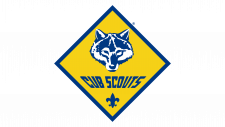Morrisons Logo
Morrisons, a UK-based supermarket chain, primarily operates in the retail sector, offering a diverse range of groceries and consumer goods. Known for its emphasis on fresh food, it maintains robust supply chain links, including own-brand food production. Morrisons was owned by Clayton, Dubilier & Rice, a private equity firm, following a 2021 acquisition. The company competes in a highly competitive market, focusing on affordability and quality to attract a wide customer base across the United Kingdom.
Meaning and history

Morrisons’ journey, an emblematic tale in the British supermarket sector, started humbly in 1899. William Morrison, the founder, began with a simple egg and butter stall in Bradford, marking the inception of a legacy. This small venture, rooted in family values, evolved into a storefront by 1952, signifying the shift from market trading to a permanent retail establishment.
The pivotal moment for Morrisons arrived in 1961 with the inauguration of its first supermarket, also in Bradford. This was a strategic leap, positioning the company within the burgeoning supermarket culture. The following decades, especially the 1960s and 70s, witnessed a steady northern expansion, cementing Morrisons’ footprint in the region. The 1967 transition to a public company catalyzed further growth, allowing for broader investments and store openings.
Morrisons’ trajectory took a significant turn in 2004 with the acquisition of Safeway, a move that expanded its influence beyond the North and into the national arena. This period was marked by integration challenges, blending two distinct retail cultures and operational models.
Facing stiff competition from both traditional and discount retailers in the 21st century, Morrisons adapted by enhancing its digital footprint, refining its own-brand offerings, and prioritizing customer experience. The foray into smaller, convenience-focused store formats and strategic partnerships was a nod to changing consumer trends.
The company’s ownership narrative shifted dramatically in 2021 with its acquisition by Clayton, Dubilier & Rice, signaling a transition from a public entity to a private one. This acquisition, valued at around £7 billion, introduced new strategies aimed at reinforcing Morrisons’ competitive edge in a dynamic market.
Morrisons’ story is marked by its resilience and adaptability, maintaining its commitment to quality and affordability. From its origins as a modest stall to its evolution into a major supermarket player, Morrisons has navigated the changing tides of retail with a steadfast focus on meeting the diverse needs of its customers.
What is Morrisons?
Morrisons, distinguished in the UK’s retail arena, emerged from a simple market stall to a major supermarket chain, known for its commitment to fresh, quality offerings. This British retail icon, blending historic roots with contemporary shopping experiences, caters to a diverse customer base with its array of groceries and consumer products.
1899 – 1961
The logo presented is a distinctive typographic treatment that spells out “MORRISONS” in capitalized letters. The font has an industrial feel, reminiscent of vintage typesets used in the early 20th century. Each character is rendered with a strong, blocky presence, and the texture within the letters suggests a possible background in metalwork or aged print, giving it a robust and enduring character. The typeface’s monochrome palette adds to the logo’s classic and versatile appearance, designed to stand out in a variety of contexts while conveying a sense of established reliability.
1961 – 1979
The logo depicts a bold, solitary ‘M’ centered within a pink oval, which is adjoined to a rectangle of the same color bearing the words “MORRISONS SUPERMARKETS.” The typeface is substantial and unembellished, conveying a sense of solidity and straightforwardness. The color pink is an unusual choice for a supermarket, potentially chosen for its association with warmth and approachability. The overall design embodies a mid-20th-century aesthetic, reflecting the era’s design trends with its clean lines and lack of ornamentation.
1979 – 1985
This logo brandishes a bold ‘M’ within an orange circle, encapsulated by a black and white rectangular border with the full “MORRISONS” name beneath. The design is stark, with a modern simplicity, contrasting the textured, vintage feel of the previous logo. The orange hue pops with vibrancy, likely chosen for its visual impact and psychological association with energy and affordability. This iteration is more graphic and less ornate, suggesting a contemporary rebranding that aligns with a forward-thinking corporate identity.
1985 – 2007
This logo showcases a commanding ‘M’ set against a luminous yellow backdrop, framed by a black border with the company name in bold typography below. The yellow is a shade lighter compared to the previous logo’s orange, which might be perceived as more inviting and friendly. The consistent use of a single bold letter ‘M’ and the surrounding border remains, ensuring brand recognition, yet the shift to yellow from orange suggests a subtle rebranding strategy, possibly to refresh the brand’s image or to stand out more distinctly in the marketplace.
2007 – 2016
In this logo, the ‘M’ is enclosed within a yellow circle, exuding warmth and friendliness, positioned above the full “MORRISONS” name in a deep green hue. The design is simpler and more fluid than the previous versions, with a softer, rounder typeface that conveys a more approachable brand personality. The removal of the rectangular border signals a modernization of the brand, moving towards a cleaner and more streamlined aesthetic. The use of green represents growth and freshness, relevant attributes for a company in the grocery sector.
2015 – 2021
This Morrisons logo features a stylized yellow tree, symbolizing growth and vitality, above the green, lowercase brand name, with “Since 1899” underscoring its heritage. This design is a departure from previous iterations, opting for a softer, more organic emblem rather than the bold letter ‘M’. The tree motif and the historical reference aim to evoke natural freshness and a long-standing tradition in the food retail space, reflecting a brand identity that values its past while looking to the future.
2021 – Today
This version of the Morrisons logo retains the yellow tree symbol from the previous iteration, which evokes a sense of organic growth and freshness, but omits the “Since 1899” tagline, opting for a cleaner and more streamlined design. The brand name remains in the same green color, suggesting stability and a connection to nature, resonant with the company’s focus on fresh food. The simplicity of this logo aligns with modern branding trends that favor minimalism and clarity, aiming for easy recognition and a strong visual impact.

















